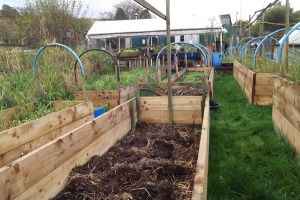Listen to my interview with Sam Mitchell of the Collapse Chronicles here, where I describe the concepts and history behind ‘The Resilience Handbook – How to Survive in the 21st Century’
It’s very likely that nothing untoward will happen in the UK just after the 29th of March. If it did, however, such a range of disasters have been forecast that you could hardly say you hadn’t been warned.
From the point of view of community resilience planning, the Brexit scare is a useful dress rehearsal. With extreme weather, increasing global conflict and resource collapse, we’re bound to be ambushed by difficult situations in the near future. Emergencies don’t normally book a calendar slot.
The possible effects of Brexit problems are centered around resource transport and distribution. As I’ve pointed out in ‘The Resilience Handbook – How to Survive in the 21st Century’, this system is far from resilient and needs steady progress in local sourcing to improve. The abundance of single use plastic packaging is directly related to the way we move food around.
It’s unlikely that utilities will be affected, unless fuel shortages result. Your freezer food stores should be safe in the Brexit scenario though I recommend using dried and canned food for your emergency stores as a rule. A couple of days without power, and your freezer stock has turned into a waste disposal problem!
Store ingredients, not ready meals. There may be some fresh food growing nearby, preferably in your own garden. A random selection of rations may turn up. Work out what’s useful to help combine a range of foods into a good meal. I find gravy granules worth keeping, for example.
Above is the demonstration box of 14 days stored food; the waterproof plastic container fits under most beds. I wrote a blog post about this back in 2016 while researching for my next book ‘Recipes for Resilience’. Below is a picture of the Resilience Garden, regularly described on this website.
Resilience gardening is designed to be low cost, in both time and money. Replacing hand to mouth living with a combination of storage and forage allows you to ride out short localised problems without having to risk going panic buying.
If you don’t have a garden, get some potted herbs and practise keeping these alive.
Always keep food which you eat in normal life. Even tins go out of date, so you’ll have to rotate an effective store. Buy canned food with no added salt; in a different sort of emergency, you may need the water.
During a prolonged resource shortage, your neighbours may run out of food before you do. There is a great deal to be said for establishing community food gardens in your area. Paying attention to this can lead to a whole new local economy, as at Todmorden, Lancashire. The Aquaponic centre and the Incredible Edible Farm, pictured below, came from grass-roots initiatives.
I hope that the Brexit palaver will focus people’s attention on the fragility of a system dependent on imported food. Buying local is more than just a slogan – it’s a survival strategy.
Buy ‘The Resilience Handbook – How to Survive in the 21st Century’ here while you still can – and look out for ‘Recipes for Resilience’, which has all the instructions you need to get started on the path to food security.




Sage advice. The Church of the Latter Day Saints recommends that everyone keeps a store of food which will last 6 months. If buying sensibly at £10 per person, per week, a family of four would need £1,040 to stock up for six months. If your budget can stretch to an extra £10 a week, then you would need two years to build up a store of that size.